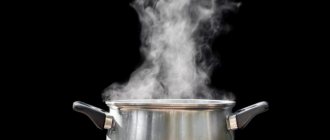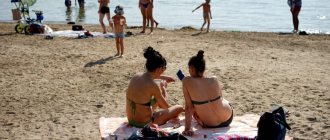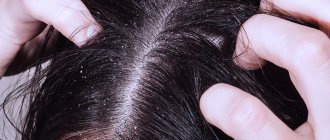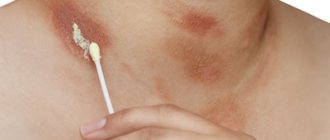A common pathology that is addressed to surgeons is a purulent wound. This condition requires timely and adequate treatment to avoid severe consequences. In the treatment of purulent formation, antibacterial agents are used that suppress dangerous microflora and help cleanse it. In addition, symptomatic treatment aimed at eliminating pathological symptoms is advisable.
In this section you will find answers to the following questions: what are the causes and symptoms of infection of injuries, how to treat purulent wounds, what drugs can be used, what to smear on a purulent wound, how to properly bandage a suppurated wound, and you will find answers to other equally important questions that interest you .
Ointments for drawing pus from closed wounds
To treat a purulent wound at home, you can make a cake based on garlic and laundry soap. Reviews show that such a cake cleanses the wound of pus, destroys pathogenic microorganisms, which speeds up recovery. You need to bake a head of garlic in the oven, then mix the vegetable with grated laundry soap. If that doesn't work, you can add a little water. Form a flat cake with your hands, apply to the affected area, and secure with a bandage. Apply 5-6 lozenges per day. They always make new ones.
When the wound suppurates, it is necessary to use ointments that have antiseptic, anti-inflammatory, antimicrobial and regenerating effects. If a large area of skin is affected, the use of tablets is additionally required. And in severe cases, when intoxication is detected, procedures are needed: hemodialysis, hemosorption, forced diuresis. If home treatment does not lead to improvement, then you should consult a doctor.
There is often a need to draw out pus in case of furunculosis, deep pimples and abscesses. Under no circumstances should you squeeze out the contents with your fingernails or improvised means - you can cause an infection and provoke the development of an abscess. The simplest and most effective way to draw out pus is ointment. Which product should I choose for this from the abundance of modern imported and domestic products? In this article you will find out which ointment draws out pus most quickly and effectively, and also read reviews about the most common drugs.
Traditional methods of treatment
Treatment with folk remedies is justified in the presence of small wounds with slight discharge of pus. Before using such methods, you should consult with your surgeon and rule out allergies to the components.
For washing and processing use:
- Saline solution . It helps to cleanse the wound of pus, as it is able to draw it out. To prepare this product you will need 10 parts water and 1 part salt. If the damage is located on the leg, then you can do foot baths with this solution;
- Soda solution is also used for rinsing and foot baths. It is prepared from baking soda (2 parts) and water (10 parts);
- Aloe juice . You can treat the wound surface with this product and apply a napkin moistened with this juice;
- Chamomile decoction is a good natural antiseptic. For 20 grams of dry chamomile you need to take 200 milliliters of water. Boil the composition in a water bath and leave until it cools, after which the solution should be filtered.
Onions and garlic have antiseptic and antibacterial properties; they are also used in the treatment of purulent wounds. A paste is prepared from them, which is applied to the injury on a napkin. This compress should be secured with a bandage.
Application of ichthyol
One of the most popular, cheap and effective remedies for abscesses and boils are ointments containing this component. The active ingredient ichthammol (ichthyol) has an anti-inflammatory effect and effectively combats burning and swelling. Apply directly to the damaged area. In case of extensive skin damage, compresses with ichthyol ointment can be used. It won’t really help draw out the pus, but it will speed up healing.
It is used for furunculosis, eczema and dermatitis, minor burns, and inflammatory processes in the epidermis.
Today, the pharmacological market offers several products for external use, in which the main active ingredient is ichthammol. Here are their names:
- Ichthyol ointment from Geropharm LLC.
- Ichthyol ointment produced.
- "Ichthyolite" with plant extracts from pharmaceutical.
- "Ichthyol Plus" with essential oils and a calming effect.
Classification
Pus is an exudate of a cloudy consistency that appears as a result of an actively developing inflammatory process at the site of soft tissue damage. The reason for the development of this process is an infection in the wound. Such wounds should be treated with special ointments, which are divided into several types. All of them and their characteristics are described in the table below.
| Classification | Characteristic |
| Antibacterial | The main component of this group of ointments is a broad-spectrum antibiotic or antiseptic, which can be iodine, furazolidone and others. They are prescribed for open purulent wounds when the top layer of skin has already been opened. |
| Stimulating the outflow of pus | Promote the rapid removal of purulent exudate to the surface of the skin. |
| Antimicrobial | They help stop the growth and further reproduction of pathogenic microflora in the wound. |
| Healing | Helps accelerate the natural regeneration of damaged tissues. Accelerate the healing process. |
Side effects of ointments based on it
Ichthammol quite often causes allergies. It is manifested by severe itching, redness of a large area of the skin, and the temperature may also rise. To make sure that there is no risk of such reactions, a small experiment must be carried out. To do this, you need to apply ichthyol ointment pointwise and observe how you feel for ten hours.
If no signs of an allergic reaction are found, you can safely use a product with ichthyol as an ointment that draws pus from the boil. It is also recommended to make a compress based on the drug more often.
Causes of pus accumulation
A boil occurs when Staphylococcus aureus bacteria gets into a wound on the skin. These bacteria cause purulent inflammation. First, redness appears on the skin, it feels hard and painful to the touch, after a few days a white-yellow or greenish dot appears in the center of the red inflammation - this is the process of an abscess. Chiryak can appear on any part of the body and at any age. The causes of a boil are as follows:
- metabolic disorders;
- increased sweating;
- failure to comply with hygiene rules;
- poor nutrition;
- reduced immunity;
- hypothermia.
Vishnevsky ointment
This remedy is also called “balsamic liniment” in pharmacology. This ointment has a distinct, specific odor. Vishnevsky ointment is contraindicated for asthmatics and allergy sufferers.
It has not shown high effectiveness as an antiseptic. But it allows you to significantly speed up the processes of regeneration and metabolism, which is important for wound healing. Balsamic liniment also has the property of drawing out pus, but in comparison with Ichthyol ointment it loses in this capacity.
Main active ingredients of the product:
- Castor oil.
- Xeroform.
- Birch tar.
Xeroform has a weak antibacterial effect. Birch tar improves blood circulation in the affected area, promoting the speedy healing of an already ruptured boil.
Reviews about the effect of Vishnevsky ointment
Customer opinions confirm that it is most effective in treating mild burns, cuts and shallow wounds. This product really significantly reduces the healing time of skin damage.
Some report that it is also effective for bruising. Even serious hematomas in the facial area lighten within a week with daily use of balsamic liniment.
As for abscesses, Vishnevsky ointment draws out pus very weakly. If we compare its effect with Tetracycline or Synthromycin ointments, they cope with the problem much faster.
"Levomekol" for boils
The product has excellent anti-inflammatory and antibacterial properties. "Levomekol" is one of the rare ointments that draws pus from a closed wound. That is, even if a pimple or boil has not yet burst and the pathological contents are still only accumulating at the site of the lesion, using Levomekol will help it come out faster.
The main active ingredient of the ointment is chloramphenicol. It has long been famous for its ability to kill bacteria of various origins. The ointment also contains the immunostimulant methyluracil. It has a healing effect, relieves itching and burning in the affected area of the skin.
Hyoxysone
An external preparation of a transparent or whitish color of uniform consistency for external use. The ointment is a combined preparation, the active components of which have anti-inflammatory, regenerating, and antibacterial properties.
Indications for required use:
- ulcers with varicose veins,
- wounds with the addition of bacterial inflammation,
- infected burns,
- pustular processes on the skin,
- erysipelas of any localization.
When using hyoxyzone with purulent wounds, the following must be taken into account. Do not apply ointment to the bleeding surface. For mild pustular processes, the drug should be applied frequently and in a thin layer, at least 4 times a day. The use of the ointment kit over large areas without the advice of a specialist is not recommended.
Contraindications for use:
- fungal infection on the skin,
- intolerance to any ingredient in the complex,
- allergy to a component of hyoxysone,
- redness and burning at the application site for sensitive skin,
- pregnancy and lactation.
Long-term use of the medication, as well as its application to large inflamed surfaces, can lead to side effects.
The price in pharmacies ranges from 32 to 54 rubles per pack.
Reviews of streptocide-containing products
Preparations based on streptocide are commercially available in the form of both powder and ointment. The latter is effective for burns and other extensive skin lesions. For furunculosis and other problems accompanied by the accumulation of pus, it is better to use ointment.
Reviews of products containing streptocide are enthusiastic: they relieve pain and discomfort in the shortest possible time. In some cases, a closed abscess breaks out already on the second compress with their use. Which ointment is best for drawing out pus? The answer is clear - try the effects of streptocide agents on yourself. Moreover, they are more than affordable in price (from thirty to one hundred rubles). It is best to use the ointment as compresses and applications.
A significant disadvantage of streptocide-containing drugs is the individual sensitivity of some patients to the group of sulfonamides. In this case, allergic reactions are possible. Before use, it is advisable to test on a small area of skin to ensure there are no unwanted effects. If you are looking for an answer to the question of which ointment draws out pus, then try streptocidal ointment. It should be ideal for such purposes.
Rashes are external manifestations of a malfunction of the body.
Before you run to the pharmacy for ointment, think about the cause of the rash. Learn to take care of yourself and understand your body. If possible, eat well, find time to rest, and practice personal hygiene. By strengthening your immune system, you strengthen your body as a whole. From the psychosomatic and psychological side, purulent formations on the body and face indicate negative emotions.
The hidden anger that lurks within you, dissatisfaction, unfulfilled desires burst out through acne. After all, pustules with dead fluid appear from infected blood. And normal blood circulation means a full life, full of pleasant events. Throw away the negativity, learn to live it, throw it out. If you have such pimples - a frequent occurrence, be sure to consult a medical specialist, but also work on your psychological state. The result will not be long in coming. It’s not for nothing that they say that all diseases arise from the nerves and are hidden in the cerebral cortex.
Remember that your health is priceless. There is no need to panic if a small wound or pimple becomes suppurated. It’s another matter if it concerns significant rashes and their frequent manifestations. This is the first sign of inflammatory processes in the blood, infection. Try using an ointment that draws out the pus and immediately consult a doctor for a definitive diagnosis.
Syntomycin ointment
Quickly and effectively draws out the contents of both closed and open ulcers. It has long been successfully used in the treatment of ulcers, boils, cuts and scratches, uncomplicated burns, and postoperative sutures.
Syntomycin ointment is a strong antibiotic. Therefore, it is often preferred to be used in hospitals (as they say, “cheap and cheerful”). Contraindicated for use by pregnant and lactating women due to its powerful antibacterial effects, which can harm the baby.
It is advisable to use this remedy under the strict supervision of a dermatologist, since syntomycin ointment can be addictive in some cases. In this case, when it is discontinued, the patient may experience severe itching and skin irritation. Or feel the return of symptoms cured with this ointment. You cannot use it for more than ten days in a row.
Mafenide acetate ointment 10%.
Indications for use:
- trophic ulcers,
- purulent wounds,
- infected burns,
- bedsores.
The ointment layer is usually 2-3 mm, the dressing is changed 3 times a week, or, in case of excessive pus, daily.
The antiseptic is applied to the wound, from where it penetrates through areas of the skin with impaired blood circulation into the systemic circulation. In addition to applying the ointment to the wound surface, the drug is injected into the purulent cavity using tampons and applying a bandage.
Before changing the dressing with ointment, if the gauze has dried to the wound surface, it is recommended to soak it with an antiseptic solution. Traumatization of the regenerated epithelium may be accompanied by profuse bleeding.
When combined with other drugs, cross-hypersensitivity with the active components may occur.
In pharmacies from 45 rubles.
Tetracycline ointment
The main active ingredient is an antibiotic. Tetracycline has been used for decades to treat furunculosis and other skin diseases. It effectively prevents the spread of microorganisms.
If it is necessary to draw out the pus, the ointment must first be purchased at any city pharmacy. A doctor's prescription is not required for purchase. The concentration of the active substance is 1 or 3%, because of this there may be a slight difference in price. Ointment with 1% tetracycline is suitable for the treatment of conjunctivitis and other eye diseases. In other areas of the skin, it is more effective to use a 3% composition. This is one of the best ointments to draw out pus.
How to cure purulent sores in the mouth
Ulcers in the oral cavity can appear due to non-compliance with hygiene rules, against the background of infectious or fungal pathology, long-term use of medications, diabetes, and frequent stress. The best medications for treatment are Benzocaine ointment, Solcoseryl. If the wounds occur due to an exacerbation of herpes, Acyclovir, Famciclovir will help.
Effective home therapies:
- Rinse - dissolve 5 Furacilin tablets in 400 ml of water, add 5 g of salt and soda. The procedure should be carried out 3-4 times a day.
- Cauterization. Rinse your mouth with a soda solution, apply hydrogen peroxide or Chlorhexidine to a sterile piece of cotton wool, and apply to the wound for 5 minutes. Carry out the procedure throughout the day at intervals of 5–6 hours.
- Anesthesia and disinfection. Combine the juice of half a lemon with 3 g of soda, add 5 ml of cold water and liquid honey. Apply the composition to purulent wounds in the morning before breakfast and before bed.
Lemon juice and honey will help get rid of purulent sores in the mouth
If wounds in the mouth are accompanied by severe pain, a piece of ice can be used as first aid and pressed against the sore - this procedure will help prevent the development of inflammatory processes and quickly eliminate discomfort in the oral cavity.
Side effects of tetracycline
It can trigger allergic reactions. This is manifested by severe itching, redness of a large area of the skin, and the temperature may rise. To make sure that there are no such reactions, you need to conduct a small experiment: apply half a teaspoon of tetracycline ointment to the bend of your elbow and observe how you feel for ten to twelve hours.
If no signs of an allergic reaction were found, you can safely continue to use the product. Now you know which ointment draws pus from a wound as quickly as possible.
"Solcoseryl" for boils
Pharmacists often advise buying and trying this modern ointment for abscesses and furunculosis. Its cost is higher than the means familiar to Russian consumers, described above. The price of one tube of Solcoseryl ranges from three hundred to four hundred rubles. For this price you can buy ten tubes of ichthyol ointment or five tetracycline.
Is Solcoseryl really that effective? Is it worth overpaying for it? Reviews on sites where people share their impressions of use are categorical in their assessment. For furunculosis, purulent abscesses and burns, Solcoseryl is practically useless. It does not have antibacterial or anti-inflammatory properties.
Its main advantage is its high healing abilities. It can be used at the stage when the pus has already completely come out of the wound.
Strong suction plaster for abscesses
Estimated reading time: ~
In one provincial town in Siberia, the wife of the governor's secretary was sick with pleurisy for several years. She has been in bed for the past four years. Her husband, being a wealthy man, took the patient to the best hospitals in Russia, Germany and France. However, not a single hospital could help the seriously suffering woman. For the last two years of her illness, she was treated by a professor whose name was known not only in Russia but also abroad, and this professor in the end had to admit that he was powerless to help the patient. In the past in Russia, in all cases when official medicine turned out to be powerless, the patient and his relatives grasped at the thought: should they turn to traditional healers? Usually doctors of official medicine treating a patient were not told about this, but in the case described it was different. The professor was told that the patient and her relatives decided to turn to one famous traditional medicine doctor among the urban common people. The professor not only did not dissuade them from such a step, but was glad of it. It may have seemed to him that a person from a special world, the world of Russian folk medicine, could bring healing where science was powerless.
Russian doctors know that traditional medicine doctors resolutely refuse to treat a patient together with doctors or under their supervision. The professor also knew very well that until the patient’s treatment by the traditional healer was completed, until then he could not appear in the house of the governor’s secretary. Doctor X was brought in to the patient.
The latter stripped the patient naked, examined her carefully and found several small abscesses on her right side. With pleurisy, small external abscesses appear from time to time. The doctor knew that except for herself, no one in the world could make an exhaust plaster with power unheard of in any medicine.
She prepared a large quantity of this miraculous remedy and began treatment the next morning.
The patient lay with a very high temperature, and those around her expected even worse: increased temperature, agony and death. The doctor placed a very thick layer of her wonderful plaster on the external abscesses on the patient’s side. The patient's temperature began to drop quickly. My health has improved. After applying the patch, the patient no longer moaned.
The patient had hardly slept for the last two days, and after applying the patch, although she woke up frequently, she still slept. The patient began to show anxiety every two hours, when the traction force of the patch was depleted and it had to be changed. After applying a layer of fresh plaster, the patient fell asleep again.
At the request of the doctor, the woman was turned with her sick side down so that the liquid drawn out from there in large quantities (like ichor) flowed out freely. Within half a day, with the help of this incomparable plaster, two large basins of ichor were pulled out of the patient’s body.
Changing the last layer of plaster, the doctor was amazed at the sight of the wound: at some distance all the meat between the ribs was pulled out by the plaster, and between the bare ribs, like a skeleton, the lungs with their gaping membrane were visible. The doctor fell into a semi-fainting state.
The patient's relatives asked her permission to call the professor who had previously cared for the patient. The doctor agreed. The professor was amazed at the change that had happened to the patient. Despite the large through wounds in her side and the lungs visible through them, the patient smiled.
The author repeats again and in capital letters: the patient SMILED and said that she felt good and at ease. The professor was amazed, warmly thanked the doctor and immediately wrote down the components of the miracle plaster and the method of its manufacture. Despite the fact that the sick professor had hundreds of official medicine remedies at hand to heal his side, he rejected them all.
For a month, he treated the patient only with the plaster of Doctor X., however, he applied it through gauze. In other words, the patch penetrated the wounds and acted on them through a layer of gauze. After a month of such application of the patch, the wound in the patient’s side completely healed, and the woman recovered.
Doctor X.'s plaster is an ointment.
This remedy is remarkable because it pulls out without pain, whereas all other patches cause pain. As long as there is a patch on the tumor or abscess, the pain stops. This same miracle plaster, having pulled the abscess tightly, painlessly breaks through it, pulls out the pus and ichor from the wound, cleans the wound and heals it.
Now a few words about the second miraculous cure of an extremely poisonous snake bite with the same plaster. After the civil war in 1917-20, Russian refugees scattered to all corners of the world. The daughter of the doctor X. mentioned here, with her engineer husband, ended up in a tropical country, replete with poisonous snakes.
One day, an engineer was bitten in the leg by a poisonous snake; Those bitten by such a snake usually live only until sunset. Hospital doctors suggested cutting off the engineer’s leg, warning that in a few hours nothing could be done to help. The engineer flatly refused the operation, since his wife was already preparing her miracle patch.
The doctors cleaned the snake bite and continuously applied a thick layer of plaster. The engineer recovered.
Doctor X. explains this cure by the fact that the traction force of the patch exceeds the force and speed of spread of snake venom in the human body. The doctor gave a dozen recipes for the author’s book with extraordinary healing power, but flatly refused to give the recipe for her wonderful patch. When she was in Russia, having cured many people, she took almost nothing from them for her work.
Here in America, she cannot treat patients, much less take money from them for it. Local official medicine considers itself the only and infallible, and Tibetan, Chinese, Russian folk and other medicines are considered here to be something like shamanism.
The author hopes that in the near future the ointment of Doctor X. will be sold as a patented remedy.
The secret of making the ointment is known to the author.
Consult a specialist (doctor) before using treatment methods from our site. Possible contraindications.
Source: natural-medicine.ru
Folk remedies blood skin
9 393 (1) Error? =)
Was the information useful?
Source: https://natural-medicine.ru/prislannoe/141-vytjazhnojj-plastyr.html
"Bepanten" for purulent inflammations
Nowadays, many unscrupulous doctors and pharmacists persistently recommend this remedy to combat purulent abscesses. In terms of cost, the drug is quite expensive, like Solcoseryl. As for the action, in order to draw out the pus, the ointment turned out to be completely useless.
It contains neither antibacterial nor anti-inflammatory components. "Bepanten" is able to perfectly relieve itching and burning. This ointment is effective for burns, cracks, and cuts. But for furunculosis, felon or deep abscesses, it is better to use other means.
What to do with a festering wound
If time permits, then you must first contact a surgeon after discovering an abscess. He will be able to determine whether there is indeed pus in the wound, make an incision, clean the wound pocket, place a drainage and bandage the area of the injury. Under the bandage, the doctor will apply sodium chloride and ointment to treat purulent wounds, after treating the surface with antiseptic solutions.
To remove dead tissue, surgeons use dressings containing trypsin. For large areas of suppuration, antibacterial drugs are prescribed for oral administration. Of course, it is not advisable to open ulcers and boils yourself with nails, needles, nail scissors and other improvised objects, because this can introduce even more infection into the wound. If it is not possible to get to a surgeon, then in order for the wound to open on its own as quickly as possible, you need to know how to draw out the pus and what ointments or creams to use for this.
How to make a compress correctly
No product will have the desired therapeutic effect if applied incorrectly. Now you know what ointment draws pus from a closed wound, but this is not enough.
Most of the remedies described above must be applied pointwise or applied as a compress. How to do this correctly?
- Fold a piece of fabric or medical bandage into several layers. You can also use a simple cotton pad. Moisten generously in solution or ointment. Apply to the affected area.
- An oilcloth is placed on top (can be replaced with medical polyethylene). On top is a thick layer of cotton wool, flannel or bandages. That is, you can use what is available.
- Secure all layers tightly with an adhesive plaster or bandage (depending on the part of the body and the area of the affected area).
- Leave the compress on for a maximum of one and a half hours. After this time, allow the skin to “breathe”, then wipe the affected area with chlorhexidine (if there is no pain). If necessary, repeat application of the compress. You can alternate ointments and medicinal formulations with each dressing change.
- If you need to apply a compress to a large area of skin (for example, chest or abdomen), you should use a special medical vest or belt.
What are the specifics of dressing ordinary and purulent wounds?
To prevent secondary infection of damaged tissues, you must follow the instructions for performing the procedure:
- Remove the old bandage.
- Toilet the wound.
- Perform treatment - manipulations to remove exudate, application of medications. When dressing, you need to take into account the possibility of serous contents getting on healthy tissue.
- Apply a sterile bandage.
To achieve a treatment effect, the specifics of disinfection of clean and purulent lesions should be taken into account.
| Clean wounds | Purulent wounds |
| Dressing tools | |
|
|
| Sequence of actions after removing the previous bandage | |
|
|
| Manipulation algorithm | |
|
|
When treating a purulent wound, you need to pay attention to the condition of the tissue:
- hemolysis;
- tetanus is accompanied by twitching of the affected fibers;
- anaerobic infection is characterized by dryness and necrosis.
Traditional medicine recommendations
Here are a number of safe components from which you can prepare an ointment for drawing out pus yourself:
- Strong brew of black tea: dip into gauze or cotton wool and make a compress for half an hour to an hour.
- Baked onions are the most popular remedy among people to speed up the breakthrough of boils. There is an opinion that no ointment draws pus from a closed wound as well as baked onions do.
- Black radish juice has excellent antibacterial properties, but you should be careful, since in the process of extracting the juice you can collect thousands of bacteria from the blender, hands, cups, and spoons.
- Compresses made from infusion of chamomile and dry crushed calendula are an excellent remedy to speed up the maturation of an abscess or boil. Don't forget to change the compresses as often as possible. If the components begin to deteriorate, inflammation may worsen and new problems may arise.
Now you know which ointments can be used to draw pus out of a wound, and which ones are not entirely suitable for this purpose.
Closed wounds are the most dangerous type of skin injury. With such injuries, an abscess often occurs: pus formed during the fight against infection accumulates under the skin and causes inflammation. To get rid of the formation, pharmaceutical ointments are used that draw out pus from a closed wound and traditional medicine that can replace them.
Use special ointments to draw out pus from a wound.
Signs of inflammation
Signs of a purulent process are divided into local and general. At the location of the damage, the following is observed:
- hyperemia;
- pain - dull, bursting. In the presence of a strong crust - twitching;
- exudate formation;
- development of edema in the place from which pus should be drawn out;
- local increase in temperature;
- dysfunction of an organ or limb;
- with prolonged suppuration. The skin around a closed wound becomes purple and bluish;
- discharge from the wound - there is an odor, a stench. Color yellow, yellowish-green.
Pieces of necrotic tissue are found on the bandage. The amount of exudate may vary. It needs to be pulled out with ointments.
General signs of a purulent process are associated with intoxication of the body by the results of bacterial activity. The patient has:
- general weakness;
- loss of appetite;
- sweating;
- increase or decrease in temperature;
- headache;
- the level of leukocytes in the blood is increased. ESR accelerates, anemia develops;
- Protein and urea are found in the urine.
Any changes in the condition of a closed wound require the attention of a doctor; do not use ointments or other means for traction yourself. It is better to visit the surgeon again. To undergo treatment of injuries rather than end up in a purulent-septic or intensive care unit.
How to replace ointment at home?
If you don’t have a pharmacy on hand, you can replace the ointment for drawing pus from the wound with folk remedies. There are several popular and effective recipes that will help with boils, ulcers and abscesses.
Aloe works best for abscesses and ulcers. The leaves and juice of this plant are used to treat festering wounds and inflammations.
Aloe compress is prepared as follows:
- Cut the aloe leaf in half, squeeze out the juice from both parts, moisten gauze in it and apply it to the damaged area.
- If a sheet is applied, cut it in half and press the inside of it to the wound.
- Secure the bandage with a bandage, preferably cover with cotton wool.
- Keep on the wound for 8-10 hours, then repeat.
Aloe is a natural remedy for treating purulent wounds
The compress is applied for several days until complete healing. Usually the abscess disappears after 2-3 days.
Cabbage compress
Cabbage leaf is an effective way to get rid of an abscess. Like aloe, cabbage juice draws pus from a boil or wound, cleansing it and relieving inflammation. Used in the form of juice or whole leaf.
- Wash the cabbage leaf thoroughly. Squeeze the juice out of it using a juicer or leave it alone if the whole leaf is applied.
- Place a leaf or gauze soaked in cabbage juice on the wound.
- Fix the compress and keep it on the wound for 12 hours. Then replace the sheet with a new one.
Cabbage is an effective remedy for abscess
Saline solution
Removing pus from a wound at an early stage can be done using a saline solution. If a limb is damaged, the damaged area can be dipped in the solution, otherwise a gauze compress should be made.
- Dissolve 10 g of salt in 100 ml of water.
- Soak gauze in the solution and apply to the wound.
- Fix and do not remove for 10-12 hours.
This bandage removes germs and viruses from the damaged area, clearing it of pus and speeding up recovery.
Saline solution helps well in the early stages of inflammation
Chamomile decoction with honey
Honey and chamomile are natural antiseptics that are good for coping with purulent wounds and inflammation. To get rid of pus, a decoction with these components is prepared and used as a local compress.
- Mix 1 tablespoon of chamomile flowers with a glass of boiled water and cook for 5-10 minutes.
- Cool, strain and add a teaspoon of preheated honey.
- Mix thoroughly and apply to gauze.
- Apply to the sore spot, secure and hold for 6-8 hours.
Chamomile is a natural antiseptic
To rupture an abscess or boil, a compress with honey must be used 2-3 times a day. Inflammation will decrease.
Garlic flatbread
Garlic is a natural disinfectant. To treat purulent wounds, it is used in combination with laundry soap. You can see the appearance of the garlic-soap cake in the photo.
Garlic and soap cake for a purulent wound
The product is prepared as follows:
- Bake the pre-peeled head of garlic in the oven.
- Grind garlic and soap, mix.
- Form a flat cake, if it doesn’t work, add a little water.
- Apply to the wound, bandage, hold for 4 hours.
A cake of garlic and soap can be applied to the wound 5-6 times a day until the pus resolves.
The most effective ointments for treating boils
There are many ointments that are effective in treating furunculosis.
But it can be difficult to figure out on your own which means to use. It is better if a doctor prescribes suitable medications.
At different stages of boil formation, you need to use ointments with different effects:
- at the beginning of the formation of a purulent abscess - agents that relieve inflammation and stimulate maturation;
- then drugs are required that draw out the pus, helping the boil to break through faster;
- After the abscess has burst (or been opened by a surgeon), healing medications will be needed.
Antiseptics and pus-pulling ointments
To ripen the boil and draw out its purulent-necrotic contents, Ichthyol, Heparin, Syntomycin ointments, and Ilon ointment are most often used.
Before applying the ointment to the affected area, you need to treat it with an antiseptic drug.
Most often, when forming boils, they use:
- Furacilin;
- iodine;
- salicylic alcohol;
- hydrogen peroxide;
- Fukortsin;
- Betadine;
- brilliant green;
- Chlorhexidine;
- Eucalymin alcohol solution;
- Dimexide.
The most commonly used antiseptic ointments are Betadine, Miramistin, Boric ointment, and Resorcinol. The goal of treatment at this stage of boil formation is to draw out pus from the neoplasm.
When the contents of the boil reach the desired stage of development, the abscess will burst and the outflow of purulent masses will begin.
To make the abscess burst, use special ointments:
- Ichthyol - in addition to its main purpose (to draw out pus), the product relieves inflammation, disinfects, and anesthetizes.
The disadvantages of ichthyol include a strong unpleasant odor due to the presence of sulfur in the composition. Ichthyol ointment is applied to the wound, covered with a sterile gauze bandage, the procedure is carried out on average up to 3 times a day. It is not recommended to use ointment with ichthyol for children under 6 years of age. The drug costs from 90 to 130 rubles. - Heparin ointment has a versatile effect: it prevents the formation of blood clots, reduces inflammation, and relieves pain.
Heparin ointment, when applied to a sore spot, dilates blood vessels, so that the components of the medicine are absorbed more quickly.The product is not used in the presence of ulcerative processes, decreased blood clotting, or for pregnant women. The price of the drug is quite affordable - from 50 to 150 rubles. for a 25 gram tube.
- Vishnevsky ointment - the full name sounds like Balsamic Liniment according to Vishnevsky, a medicine with two main active ingredients - birch tar and xeroform.
This is a proven remedy with an effective effect, which should be applied to the sore spot, covered with a bandage. It is optimal to use it twice a day.Contraindication to use may be hypersensitivity to the components. The ointment is affordable - on average from 30 to 60 rubles, depending on the dosage.
- Elon ointment is effective due to its pronounced anti-inflammatory effect and the ability to accelerate the process of ripening and opening of boils.
The composition includes natural ingredients - turpentine oil, larch turpentine, and other herbal preparations. This remedy is used at all stages of purulent inflammation of the skin. Apply the medicine to the affected area for 10 - 12 hours, covering it with a sterile bandage. The ointment costs from 350 to 600 rubles in different pharmacies.
Hormonal
Hormonal drugs can only be prescribed by a doctor, taking into account the severity of the purulent process and the individual characteristics of the patient.
Medicines containing glucocorticosteroids (read what they are here) have many contraindications for use:
- Hyoxysone - the combined effect of the drug is provided by the hormone hydrocortisone and the tetracycline antibiotic oxytetracycline included in the ointment.
The ointment should be applied to the area of the boil up to 3 times a day, in a thin layer. The duration of treatment is individual.The drug should not be used during pregnancy and breastfeeding, as well as in children under 12 years of age. You can purchase the ointment at a price of 70 to 85 rubles per 10-gram tube.
- Celestoderm is an ointment with the hormone betamethasone. Has a pronounced anti-inflammatory effect.
To achieve a therapeutic effect, it is enough to apply the ointment to the boil twice a day.Pregnant and lactating women should not be prescribed this drug; it is not used to treat children under 6 months of age. The price of the medicine in different dosages ranges from 180 to 500 rubles.
- Triderm - the drug is available in the form of an ointment or cream. The anti-inflammatory and antibacterial effect is provided by betamethasone, clotrimazole and the antibiotic gentamicin included in the drug.
Triderm should be treated with the affected area, the product is applied 2 times a day. Pregnant women should use the medicine strictly under the supervision of a doctor; the drug should not be prescribed to children under 2 years of age.A 15-gram tube of ointment costs from 500 to 600 rubles, a cream in the same dosage costs from 450 rubles.
This article provides a list of corticosteroid medications. Find out more!
Don’t know how to treat chickenpox in a child’s mouth? Our publication will tell you about this.
Treatment of a boil in the ear is discussed in detail here: https://udermatologa.com/zabol/pio/fur/chirey-furunkul-v-uhe-foto-simptomy-lechenie/
Antibiotics
Antibiotic ointments are often used to treat boils. They help destroy pathogenic bacteria that cause the appearance of purulent abscesses.
You cannot do without these drugs if the patient has a weak immune system, when the boils are localized on the face, or in case of relapses of furunculosis.
On average, skin pathologies should be treated with antibacterial ointments for no longer than 5–7 days.
Before applying the external agent, treat the affected area with an antiseptic.
Popular antibacterial ointments are:
- “Levomekol” is a complex-action drug that fights inflammation, destroys pathogenic microflora, and promotes better wound healing (due to the content of methyluracil).
Soak a sterile napkin with the ointment and apply it to the boil, then fix it. The dressings are changed 3-4 times a day.The drug has almost no contraindications. A 40-gram tube of ointment costs from 120 to 140 rubles.
- Tetracycline ointment is an affordable and, at the same time, very effective remedy.
The antibiotic tetracycline included in the composition actively fights pathogenic bacteria. The product is applied to an already opened boil, when the cavity is cleansed of purulent-necrotic masses. Change the bandage every 12 hours until the wound is completely healed. The price is quite affordable - from 25 to 45 rubles. - Oflocain is a drug with a “three in one” effect: it fights microbes, removes swelling, and relieves pain (due to the content of lidocaine).
The ointment can be applied to the wound or to a sterile bandage that is applied to the affected area. The ointment costs from 80 to 130 rubles per 15 g tube. Oflomelid is used to treat boils, which also contains ofloxacin and lidocaine plus another component - methyluracil. - Levosin is an ointment based on chloramphenicol and 4 more antibacterial components.
This is a drug with a combined action, including analgesic action. It is prescribed when chiryak causes severe pain. Change the ointment-soaked bandage up to 3 times a day. The medicine is inexpensive - about 80 rubles for a 40-gram tube. - Synthomycin ointment has a wide spectrum of action.
It is enough to apply the drug under the bandage once a day and keep it on for 12–14 hours. The medicine is well tolerated, but has many contraindications - in addition to periods of pregnancy and lactation, this includes age up to 2 months, kidney and liver diseases, individual intolerance. The price ranges from 40 to 70 rubles. - Baneocin is an ointment based on two antibiotics that complement each other.
Actively fights pustular infection. It has virtually no side effects. Not recommended for use by pregnant and nursing mothers. The instructions for the drug recommend applying the medicine to the affected area three times a day. The ointment costs from 300 to 450 rubles. - Bactroban is a modern drug, quite safe, approved for use in different age categories.
Boils should be treated with an ointment based on the antibiotic mupirocin 3 times a day. The average price of the drug ranges from 150 to 250 rubles. - Fucidin is an antibiotic based on fusidic acid.
Used in the form of ointment and cream. The boil is treated with the product 2 – 3 times a day. Can be used to treat children. There are practically no side effects. The drug is not cheap - it costs from 450 to 600 rubles.
We talked more about antibiotics for boils in this publication.
Homeopathic
Homeopathic remedies are also used to treat boils at home:
- Traumeel S is a complex product based on plant and mineral components.
The ointment has an anti-inflammatory, analgesic effect, and helps correct immune and metabolic processes.During pregnancy, use after mandatory consultation with your doctor. 50 g of the drug costs from 500 to 600 rubles.
- Gepar sulfur is a homeopathic ointment that helps the boil to ripen and open faster.
Heals and disinfects wounds. Use twice a day for at least a week. Individual intolerance to the drug is possible. Price – about 200 rubles.
Healing
After the boil has opened naturally or as a result of surgery, it should be treated with special ointments for healing:
- Zinc ointment is an affordable and effective remedy. The drug contains only 2 components - zinc oxide, which has an anti-inflammatory effect, and petroleum jelly.
The ointment also acts as a drying agent. Approved for use during pregnancy and lactation.The price is budget - from 25 to 50 rubles. Salicylic-zinc paste is also used to heal boils.
- Solcoseryl is a product based on hydrolyzate from the blood of calves.
The ointment promotes collagen production, tissue regeneration, and wound healing. The medicine is applied to a boil that has been pre-treated with an antiseptic; it forms a protective film on the surface, which prevents infection. Costs on average about 300 rubles.
At the healing stage, you can use a cream based on natural ingredients “Rescuer”, as well as Bepanten, Pantoderm, Actovegin.











